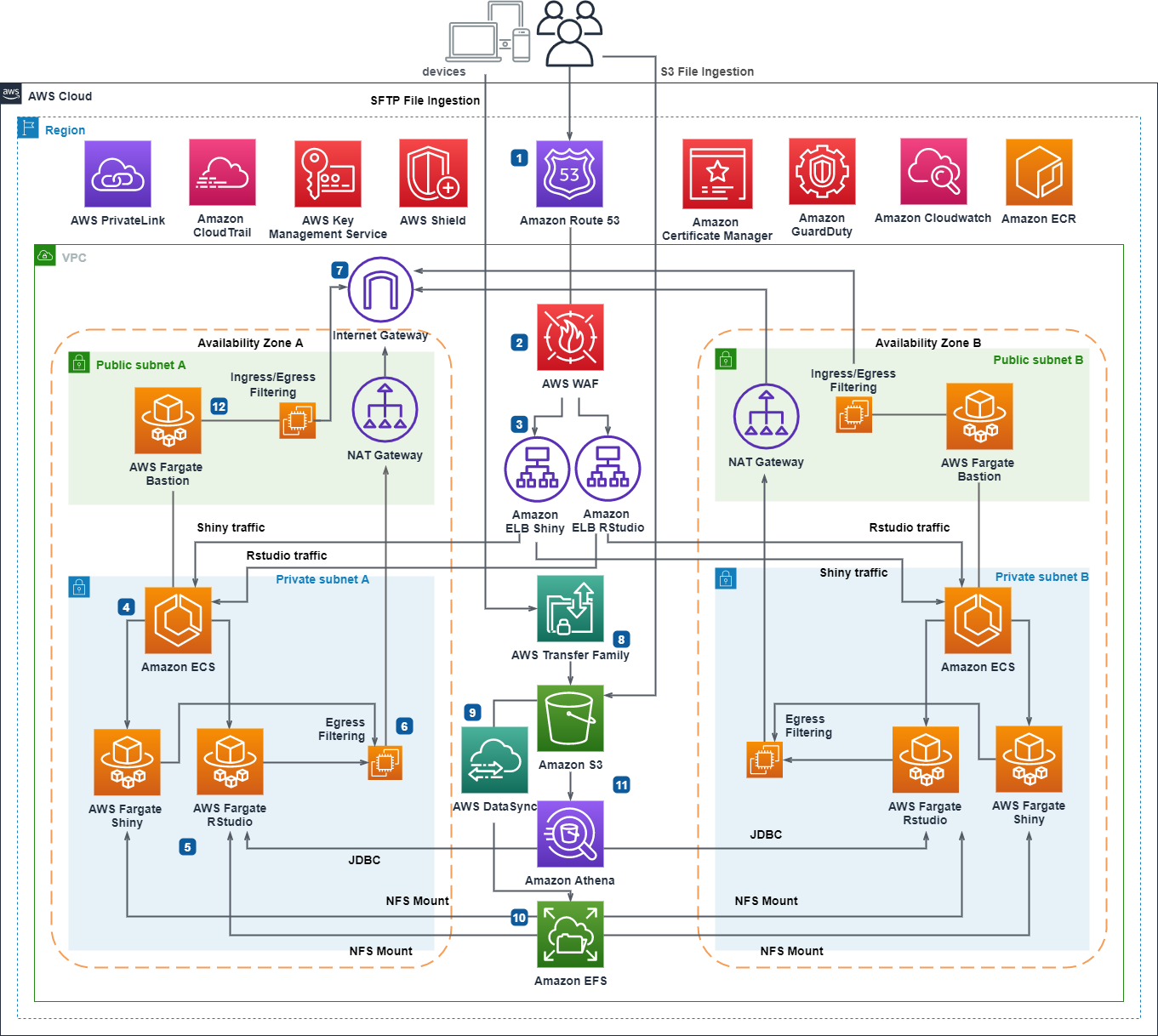Challenges of Managing Multi-CDN Architectures

- Complexity: Coordinating multiple CDNs with different capabilities and APIs can be complex and time-consuming.
- Performance monitoring: Tracking the performance of each CDN and identifying bottlenecks can be difficult due to the distributed nature of the architecture.
- Vendor lock-in: Relying heavily on a single CDN provider can limit flexibility and increase risk.
- Cost optimization: Managing multiple CDN contracts and billing cycles requires careful planning to avoid overspending.
- Security: Ensuring data security across multiple CDNs can be difficult, especially when dealing with user-generated content.
Best Practices for Managing Multi-CDN Architectures

- Use a CDN management platform: Centralize CDN management, monitoring, and analytics to simplify operations.
- Establish performance SLAs: Define clear performance targets and monitor them regularly to ensure optimal delivery.
- Diversify CDN providers: Partner with multiple CDNs to mitigate risk and optimize performance by region.
- Configure failovers and redundancy: Set up mechanisms to automatically fail over to backup CDNs in case of outages.
- Optimize content caching: Establish caching policies to reduce latency and improve user experience.
- Monitor user experience: Use tools to monitor key performance indicators such as page load time and video buffering.
- Automate tasks: Utilize automation tools to streamline routine tasks such as content purging and performance monitoring.
- Consider performance-based pricing: Opt for CDN plans that charge based on actual performance to incentivize optimal delivery.
- Leverage CDN features: Explore advanced features offered by CDNs, such as image optimization, video transcoding, and security enhancements.
- Regularly review and optimize: Continuously evaluate the performance and cost of the multi-CDN architecture and make adjustments as needed.
Additional Considerations:

- Establish clear communication channels: Ensure effective communication between teams responsible for CDN management, operations, and customer support.
- Train and upskill staff: Provide training on multi-CDN management best practices to ensure a knowledgeable team.
- Stay informed about industry trends: Monitor advancements in CDN technology and best practices to improve operations and outcomes.
- Foster a culture of collaboration: Encourage teamwork and open communication to facilitate effective problem-solving and decision-making.## Managing Multi-CDN Architectures: Challenges And Best Practices
Executive Summary
Multi-CDN architectures offer numerous benefits, but managing them can be complex due to inherent challenges. This article explores the key challenges of managing multi-CDN architectures and provides best practices to overcome them. By understanding these challenges and implementing the recommended practices, organizations can optimize their multi-CDN architectures for improved performance, reliability, and cost-effectiveness.
Introduction
In today’s interconnected world, businesses rely heavily on content delivery networks (CDNs) to ensure fast and reliable delivery of their digital content. Multi-CDN architectures, which involve using multiple CDN providers, have gained popularity as organizations seek to enhance content performance, improve geographic reach, and reduce costs. However, managing multi-CDN architectures presents unique challenges that require careful consideration.
FAQs
1. What are the benefits of using a multi-CDN architecture?
A multi-CDN architecture offers several benefits, including:
- Improved performance: By distributing content across multiple CDNs, organizations can reduce latency and improve overall content delivery performance.
- Increased reliability: Multi-CDN architectures provide redundancy and failover capabilities, ensuring content availability even in the event of outages with one CDN provider.
- Reduced costs: Organizations can potentially reduce costs by optimizing content delivery across multiple CDN providers and negotiating better pricing based on usage patterns.
2. What are the key challenges of managing a multi-CDN architecture?
Managing a multi-CDN architecture involves several challenges, such as:
- Complexity: Managing multiple CDN providers and their respective configurations can be complex and time-consuming.
- Vendor lock-in: Organizations may become dependent on specific CDN providers, making it difficult to switch providers or negotiate better rates.
- Content management: Ensuring consistent content delivery across multiple CDNs requires careful content management and synchronization processes.
3. Are there best practices for managing a multi-CDN architecture?
Yes, there are several best practices that organizations can implement to manage their multi-CDN architectures effectively, including:
- Centralized management: Use a centralized management platform to monitor and control all CDN providers from a single interface.
- Traffic routing optimization: Implement intelligent traffic routing algorithms to distribute traffic across CDN providers based on performance, location, and cost.
- Content synchronization: Establish automated and efficient content synchronization processes to ensure content consistency across all CDN providers.
Top 5 Subtopics for Managing Multi-CDN Architectures
1. Performance Monitoring and Optimization
- Monitor key performance metrics such as latency, availability, and throughput.
- Use real-user monitoring tools to assess content delivery performance from the end-user perspective.
- Implement performance optimization techniques such as content optimization and CDN caching strategies.
2. Traffic Management and Routing
- Configure traffic routing rules to distribute traffic optimally across CDN providers.
- Use geo-aware routing to direct traffic to the nearest CDN server for improved latency.
- Implement load balancing techniques to ensure even distribution of traffic and minimize bottlenecks.
3. Content Management and Delivery
- Establish clear content delivery policies and processes for all CDN providers.
- Implement automated content synchronization to ensure consistent content delivery across all CDNs.
- Use content delivery optimization techniques such as image compression and video streaming optimization.
4. Security and Compliance
- Implement robust security measures to protect content and user data.
- Ensure compliance with industry regulations and standards, such as PCI DSS and GDPR.
- Monitor for security threats and vulnerabilities and take appropriate mitigation actions.
5. Cost Management and Optimization
- Track and analyze CDN costs to identify areas for optimization.
- Negotiate competitive pricing and volume discounts with CDN providers.
- Implement cost-saving strategies such as using different CDN tiers for different content types.
Conclusion
Managing multi-CDN architectures effectively requires a comprehensive understanding of the challenges involved and the implementation of best practices. By addressing these challenges and adopting the recommended approaches, organizations can optimize their multi-CDN architectures for superior performance, reliability, and cost-effectiveness. A well-managed multi-CDN architecture enables businesses to deliver their digital content seamlessly and efficiently to global audiences, enhancing user experience and driving business success.
Relevant Keyword Tags
- Multi-CDN Architecture
- Content Delivery Network (CDN)
- Performance Optimization
- Traffic Management
- Cost Management
